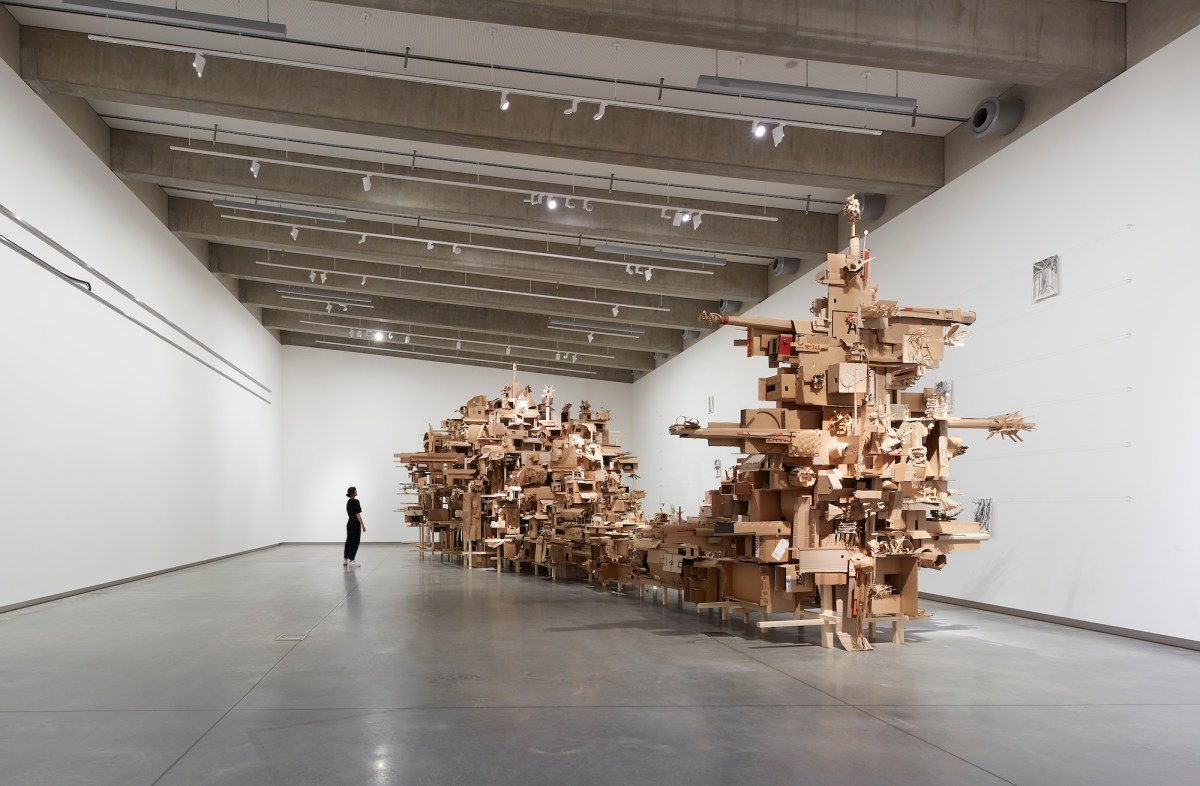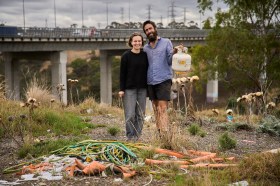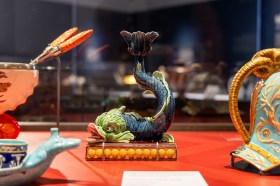Every time one visits Bundanon – Arthur and Yvonne Boyd’s legacy Museum in the Shoalhaven region of NSW – the space has been altered, offering a reboot and a boost for visits who have made the journey.
For this suite of new commissions for the exhibition, Thinking together: Exchanges with the natural world, the usual flow between the two main gallery spaces has been closed, forcing visitors to back-track and enter the smaller gallery via a newly created hands-on play zone or through a hang of paintings from the Boyd collection, again a new commitment by Bundanon.
The division fractures this exhibition, read as two propositions on the same topic, and offers extremely different viewing experiences. One is bold and dominating in scale, the other is intimate and unexpected.
In tandem they explore quite different practices that unpack the idea of collaboration, or communion with nature and a kind of reciprocity between the human and non-human.
The exhibition title, ‘Thinking together’, also expands togetherness from simple collaboration to the idea that new knowledge can only be created through cooperation between species, embodying First Nations practices of knowledge sharing. Put simply, this exhibition promotes slow thinking beyond its ‘wow’ – and it pulls it off.
The new commissions
Three new commissioned works are the backbone of Thinking together, all of which stem from artist residencies at Bundanon. The initial impact is one of scale, tapping into the emormity and immersive quality of the site.
Dominating the main gallery is a fallen tree – half a tree to be specific, as seen in the hero image, above – constructed from reclaimed cardboard and created with community (largely school groups) by Isabel and Alfredo Aquilizan. The form is a newish diversion from their usual constructions of the built environment – still about habitat and home but also pointing to conversations around logging, land use and urban sprawl – all at the cost of native forests and aligning with Boyd’s vision for environmental preservation and regeneration.
The half-tree plays off the reflection of the concrete floor and that of the Shoalhaven River – so often captured in Arthur Boyd’s paintings – and is paired with an accumulative drawing installation.
There is a nice connection across the gallery space to an animatronic drawing installation with video by Robert Andrew (a descendant of the Yawuru people), which sketches out an expansive stretch of the Shoalhaven River surrounded by sandstone cliffs – one that Boyd often painted.
Slowly building a cumulative drawing across the length of the gallery, the work speaks to the length of the river, building intensity over the exhibition and reflecting the incremental ways in which knowledge of Country is gathered and understood.
Andrew worked closely with Bundanon’s Cultural Liaison Manager, Jerome Comisari, to gather charcoal and choose sites along the river, connecting those First Nations histories, to Boyd, in this contemporary tech-driven ode.
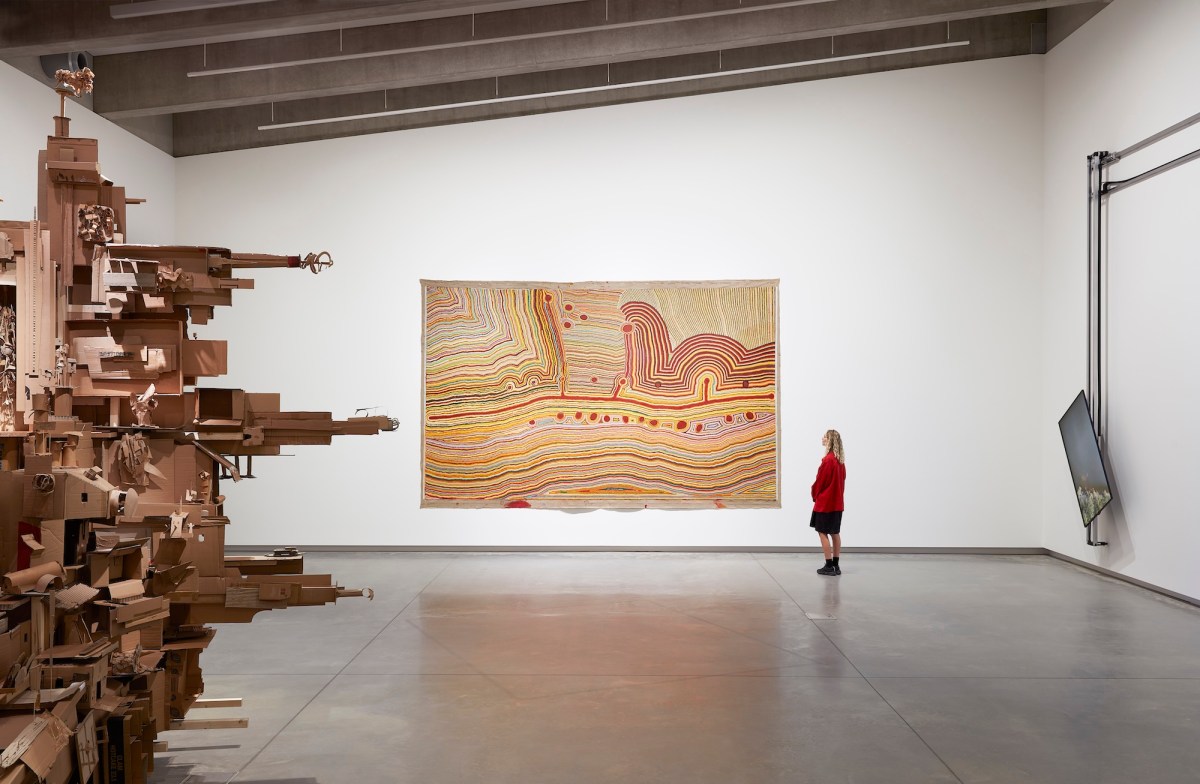
The main gallery is completed with an unstretched canvas by Martu Artists of the central Western Australia. The scale of this painting is awe-inspiring – and is well-paired with the ambition of both the Aquilizans and Andrew’s works.
This creation of this painting – often silent between the artists – is a kind of communion between generations navigating Desert Country, linking environmental and ritual knowledge with geographic information and ancestral stories.
Simply, in this gallery, as a viewer you become witness to the landscape’s capacity to take hold of the human spirit, and the kind of grandeur it demands when represented – regardless of the medium.
From scale to intimacy
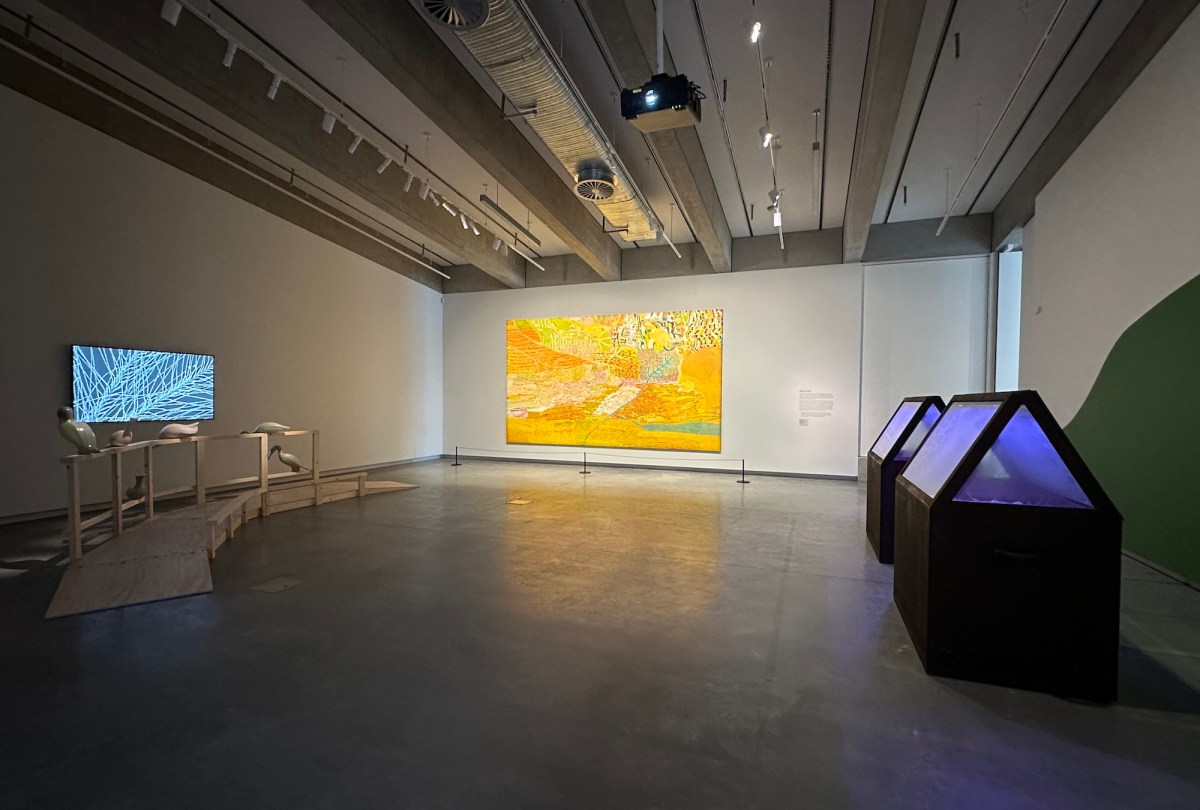
In the second gallery, a through-line is created with another large canvas by the Martu Artists (this time stretched). These works are rarely exhibited for their scale, so it is a real treat to be able to see them. However, in its bold palette and frenetic energy, it sits in sharp contrast with the works of Keg de Souza, Sorawit Songsataya and Tina Stefanou presented here.
A new commission, De Souza’s ambitious and quirky installation utilises Wardian cases – a 19th century discovery that allowed for the transportation of botanic species. Working with mycelium and fungi that thrive at Bundanon, these species are literally wired for sound – a biofeedback which is amplified into the space. It is an active collaboration.
By putting these locally-charged specimens in historically-charged cabinets, we are triggered into witnessing and questioning our own interactions with nature.
Stefanou’s video and sound piece, Horse Power (2019), again explores the idea of co-creation between human and non-human species. Dressing retired horses in a sheath of bells and chimes – a kind of symphonic armor, if you like – their movement choreographs a sonic piece.
Stefanou has built a long-standing relationship with these horses, and genuinely considers them as co-authors in her work. It is a beautiful, sensitive piece and a highlight of the exhibition that, in contrast with the works in the first gallery, does not need scale to deliver.
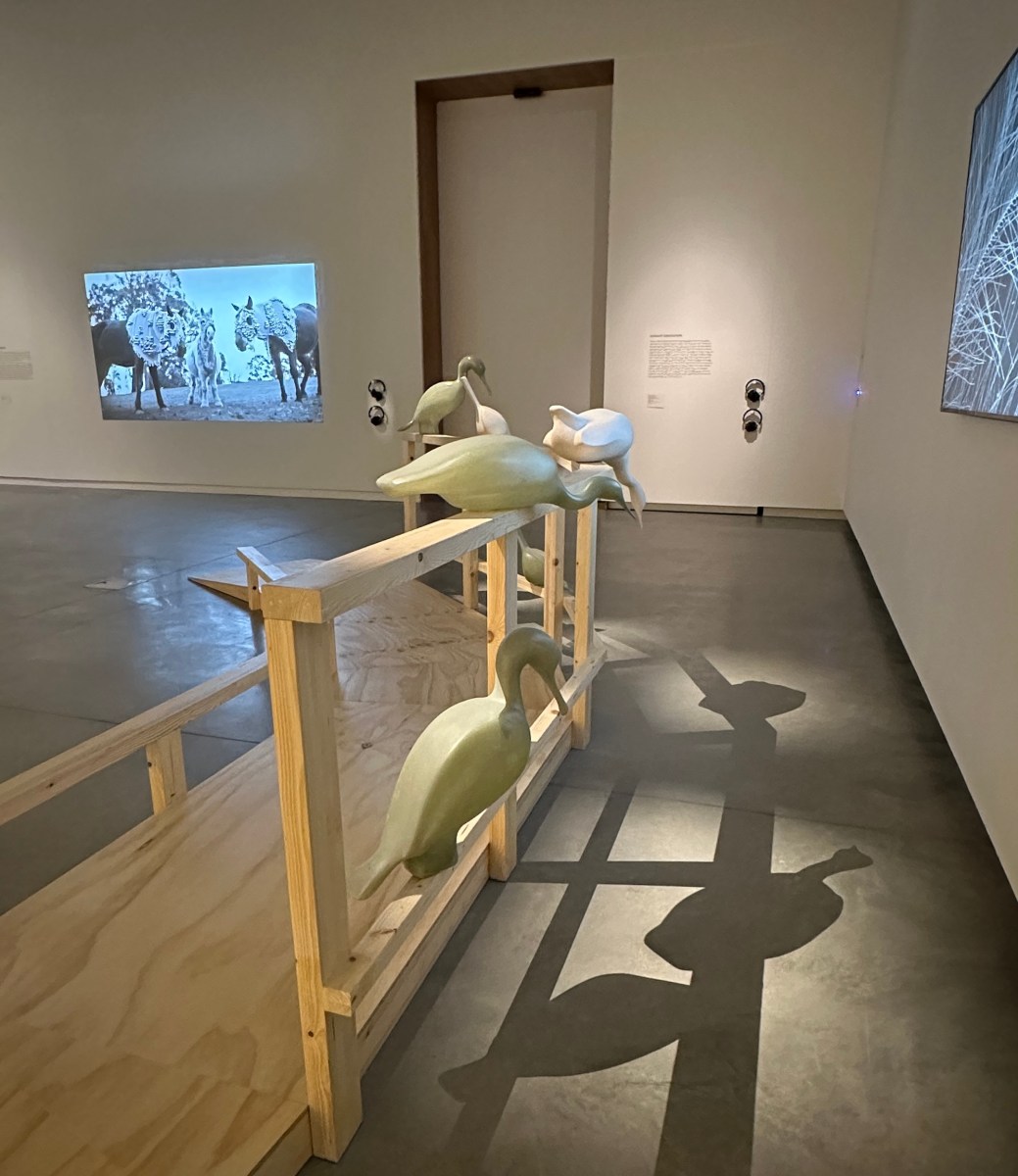
Completing the exhibition is the work of Songsataya, which takes her cue from the kōtuku (the Eastern great egret), an endangered bird that migrates between Thailand and Aotearoa/New Zealand, and which reflects the artist’s own cultural migration. The video piece, accompanied by sublime minimal sculptures creating playful (and metaphorically charged) shadows, again sutures connections of impact and loss.
Reflecting on this exhibition as a whole, on paper it sounds disparate and jarring – and not at all ‘together’ as the title suggests. However, it oddly gels. If we allow ourselves to slip into the stream of these super imaginative prompts, it allows slow discovery, a sure gift in our times.
Thinking together: Exchanges with the natural world
1 March – 8 June 2025
Artists: Robert Andrew, Keg de Souza, Sorawit Songsataya, Tina Stefanou, Martu Artists of central Western Australia
Bundanon, Shoalhaven, NSW
